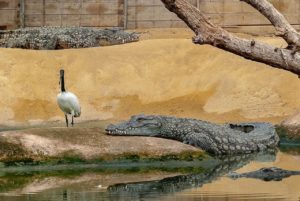
Crocodiles, birds, and dinosaurs have a common ancestor that lived around 240 million years ago, making them evolutionary “relatives.” This means that they share a common genetic heritage and have descended from the same ancestral species.
Over time, these three groups of animals have evolved along different paths, adapting to different environments and developing unique characteristics. Dinosaurs went extinct around 65 million years ago, but crocodiles and birds have continued to thrive.
Today, crocodiles are the closest living relatives to birds. They share a number of similarities, including:
• A similar body structure, with a long tail, four legs, and a scaly skin
• A similar skull structure, with teeth that are designed for tearing flesh
• A similar digestive system, which is able to process raw meat
• A similar reproductive system, which involves laying eggs
Despite these similarities, crocodiles and birds are also very different in some ways. For example, crocodiles are cold-blooded reptiles, while birds are warm-blooded animals. Crocodiles live in water, while birds live on land or in the air.
The evolutionary relationship between crocodiles and birds is a fascinating example of how different species can evolve from a common ancestor. It is a reminder that all living things are connected, and that we share a common heritage with all other animals on Earth.
 Pazionmedia.com Pazion Media l Latest News l Politics l Sports l Entertainment
Pazionmedia.com Pazion Media l Latest News l Politics l Sports l Entertainment



